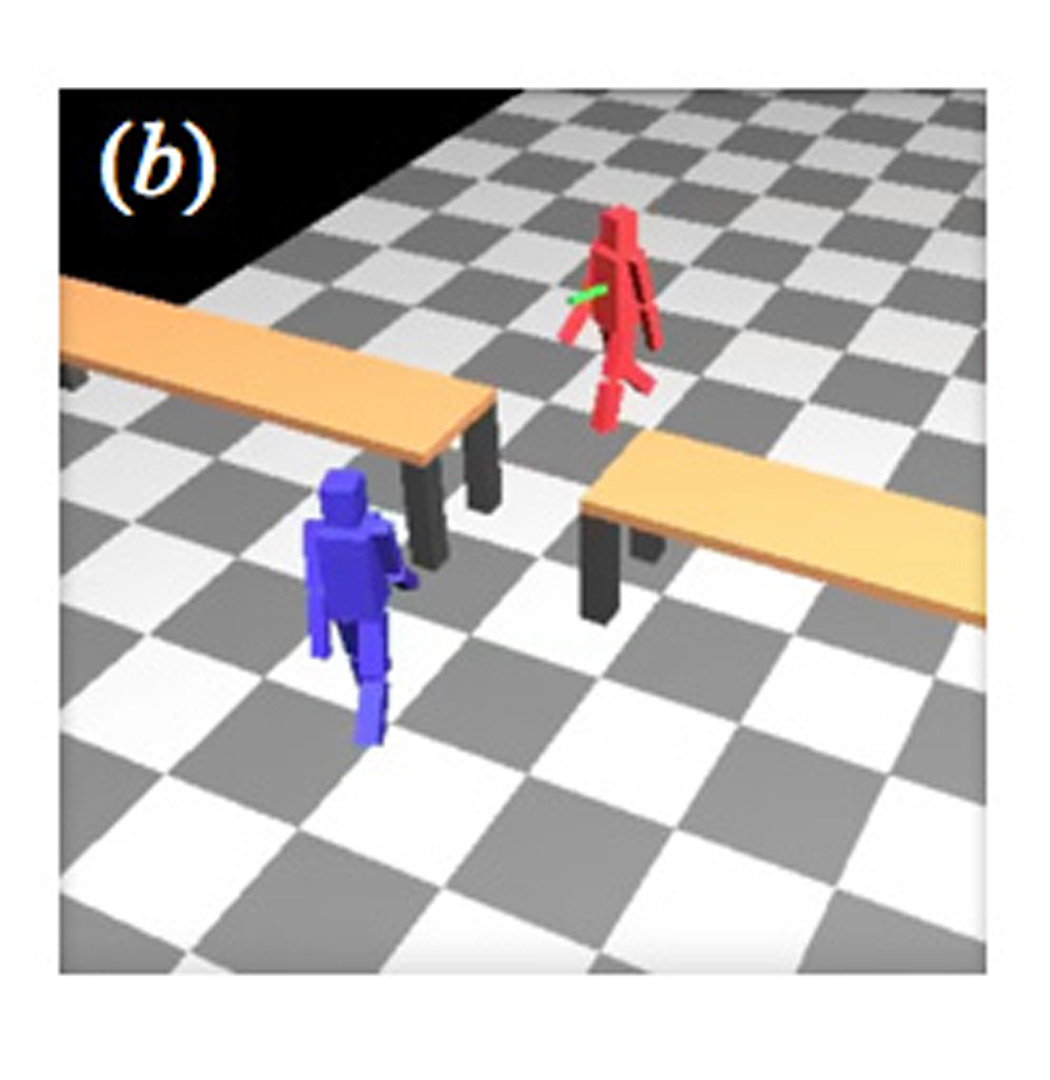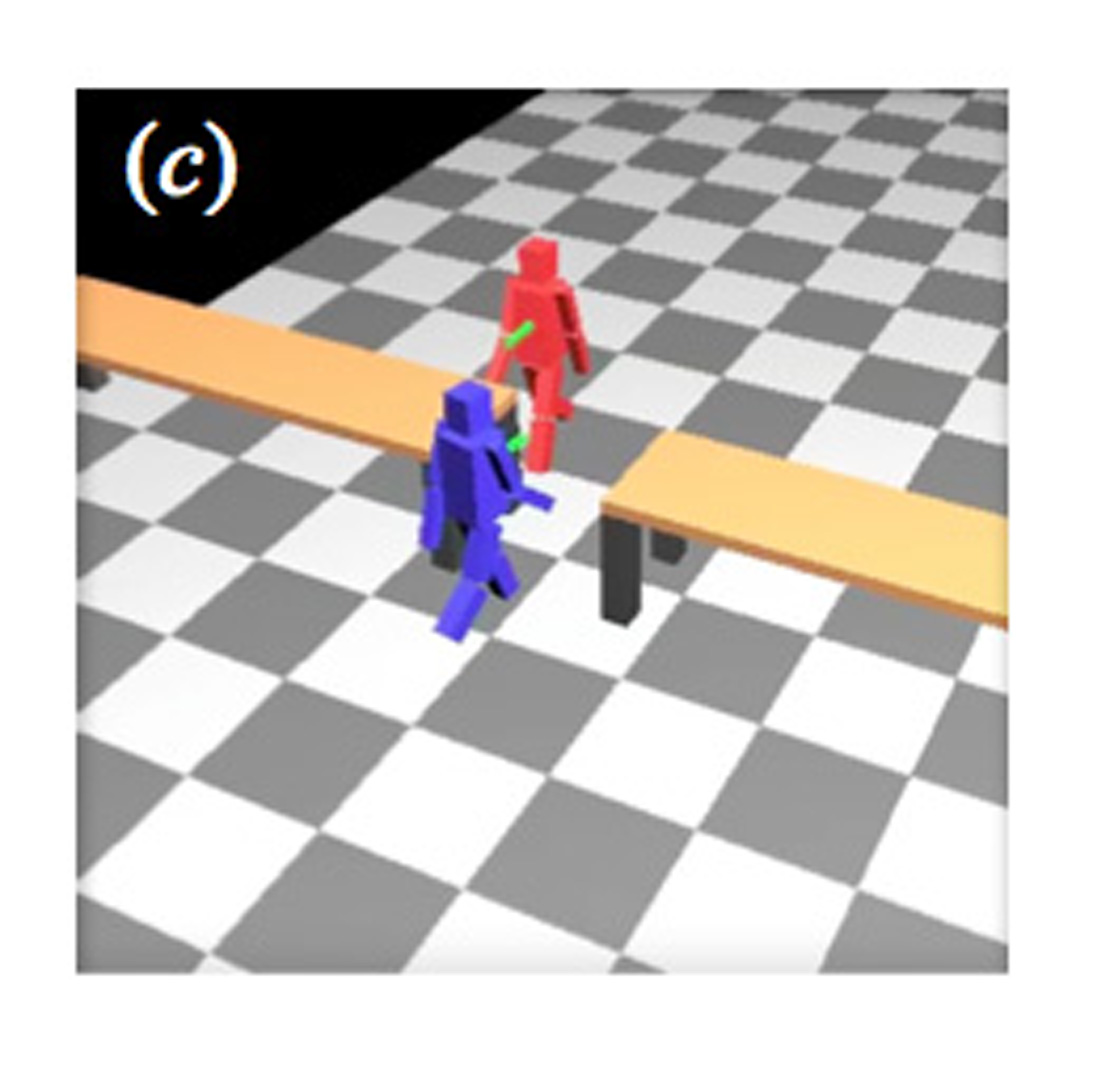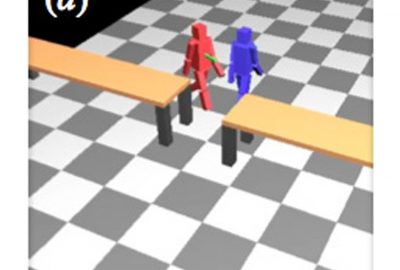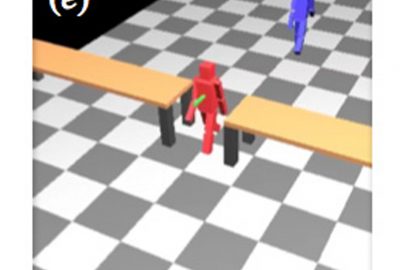“Humanlike Behavior Model with Probabilistic Intention” by Ibe, Masuyama, Yamashita and Asama
Conference:
Type(s):
Title:
- Humanlike Behavior Model with Probabilistic Intention
Presenter(s)/Author(s):
Entry Number: 58
Abstract:
Animating the motion of a realistic crowd of pedestrians has been an important goal in the field of computer graphics, video games and movies. Pedestrians in the real world seem to consider not only collision avoidance but also interaction with other pedestrians. Thus, it is required to develop pedestrian models that produce humanlike behavior which includes social interactions such as giving-way in order to simulate the realistic motion of pedestrians. Human behaviors and activities have been studied with various approaches. Social Force Model (SFM) describes each pedestrian’s motion by virtual forces from its target point, other pedestrians and surrounding environment [Helbing and Molnár 1995]. Each individual motion is described by differential equations and calculated in parallel. SFM is one of the most suitable models to simulate the motion of pedestrians and there are several extensions to simulate pedestrian behaviors in large spaces by applying some rules to SFM (e.g., [Pelechano et al. 2007]). However, these studies treated pedestrian intention as the internal state which consists of several discrete states though the human intention in the real world is continuous and ambiguous. As a result, humanlike behaviors could not be produced when the intention of other pedestrian is unclear.
References:
1. Helbing, D., and Molnár, P. 1995. Social force model for pedestrian dynamics. Physical Review E 51, 4282–4286.
2. Pelechano, N., Allbeck, J. M., and Badler, N. I. 2007. Controlling individual agents in high-density crowd simulation. In Proceedings of the 2007 ACM SIGGRAPH/Eurographics Symposium on Computer Animation (SCA2007), 99–108.
Additional Images:
- 2013 Poster: Ibe_Humanlike Behavior Model with Probabilistic Intention
- 2013 Poster: Ibe_Humanlike Behavior Model with Probabilistic Intention









